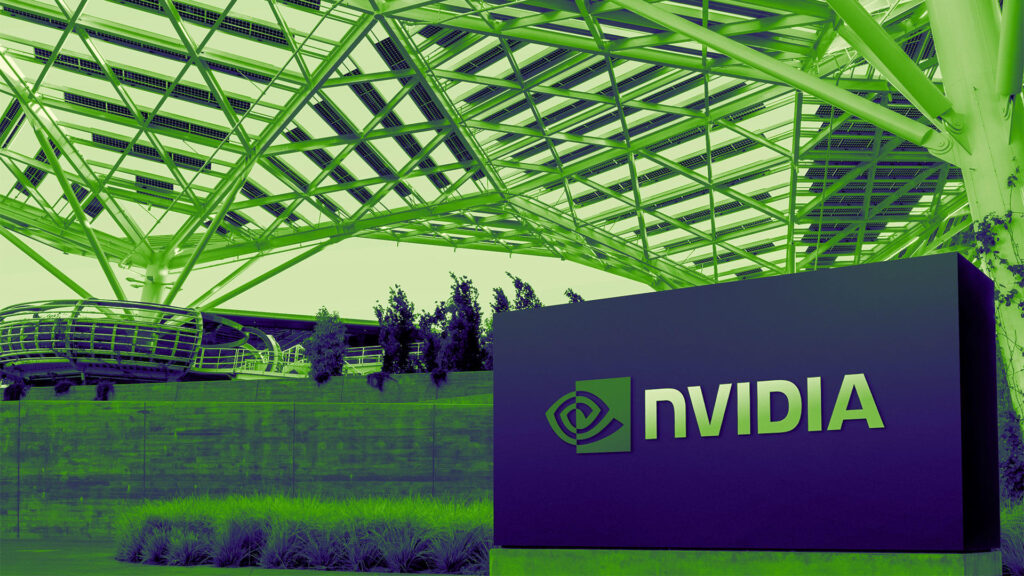NVIDIA Corporation, a global leader in graphics processing units (GPUs) and artificial intelligence technologies, has often been a topic of interest in the financial world. Among the most discussed events in NVIDIA’s history is its stock split, which has raised questions among investors and market enthusiasts. In this article, we delve deep into the NVIDIA stock split, its implications, and how it affects the company’s valuation, shareholders, and potential investors.
What is a Stock Split?
A stock split is a corporate action where a company divides its existing shares into multiple shares. This process reduces the price per share while keeping the total market capitalization unchanged. For example, in a 4-for-1 stock split, shareholders receive four shares for every one share they own, and the share price is adjusted accordingly.
The primary reasons companies undertake stock splits include:
- Improved Accessibility: Lowering the share price makes the stock more affordable for retail investors.
- Increased Liquidity: More shares in circulation often lead to higher trading volumes.
- Enhanced Market Appeal: A lower price per share can make a stock more attractive to a broader audience.
NVIDIA Stock Split: A Timeline
History of NVIDIA Stock Splits
NVIDIA has executed multiple stock splits in its corporate history. Here’s a quick overview of the key instances:
- June 27, 2000: NVIDIA conducted a 2-for-1 stock split.
- September 17, 2001: Another 2-for-1 stock split was implemented.
- April 7, 2006: The company executed a 2-for-1 stock split.
- July 20, 2021: NVIDIA announced a 4-for-1 stock split, marking one of its most significant splits in recent years.
The 2021 NVIDIA Stock Split
The 2021 stock split was a notable event that caught the attention of both seasoned investors and newcomers. NVIDIA decided on a 4-for-1 stock split, which quadrupled the number of shares in circulation. The share price, which was trading around $750 before the split, adjusted to approximately $187.50 after the split.
Why Did NVIDIA Conduct a Stock Split?
Several factors motivated NVIDIA’s decision to split its stock:
- Making Shares More Affordable NVIDIA’s rapid growth in the technology sector had driven its share price to high levels. By splitting the stock, the company aimed to make its shares accessible to a broader base of retail investors.
- Signaling Growth Potential A stock split is often seen as a signal of confidence in the company’s future. NVIDIA’s management likely used the split to indicate their optimism about sustained growth in revenue and market share.
- Attracting Retail Investors Lower share prices attract small-scale investors who might hesitate to invest in expensive stocks. This inclusivity expands NVIDIA’s shareholder base.
- Boosting Liquidity With more shares available in the market, liquidity improves, leading to smoother trading and potentially reduced price volatility.
Impact of the NVIDIA Stock Split
On Shareholders
Existing shareholders experienced an increase in the number of shares they owned. For instance, if an investor held 10 shares of NVIDIA before the split, they owned 40 shares after the 4-for-1 split. While the total value of their holdings remained unchanged immediately, the split could create opportunities for future gains as the lower share price attracts new investors.
On Potential Investors
The reduced share price made NVIDIA more accessible to retail investors. It allowed individuals with limited capital to buy into one of the most promising tech companies, further broadening the investor pool.
On NVIDIA’s Market Capitalization
The stock split did not directly impact NVIDIA’s market capitalization. However, the increased trading volume and investor interest following the split could indirectly influence the company’s valuation over time.
On Market Perception
A stock split often generates positive sentiment in the market, as it reflects management’s confidence in the company’s growth. NVIDIA’s move was no exception, as it reaffirmed the company’s strong position in the technology sector.
NVIDIA’s Post-Split Performance
The 2021 stock split coincided with NVIDIA’s continued dominance in GPUs, AI, and gaming technologies. Here are some notable trends observed after the split:
- Rising Share Prices After an initial adjustment, NVIDIA’s shares witnessed significant growth, fueled by robust financial performance and expanding markets in AI, gaming, and data centers.
- Enhanced Revenue Streams NVIDIA’s ventures into AI-driven technologies and autonomous vehicles continued to bolster its revenue, attracting both institutional and retail investors.
- Increased Institutional Interest The stock split made it easier for large institutions to acquire NVIDIA shares in bulk, boosting the company’s market stability.
What Does the NVIDIA Stock Split Mean for the Future?
NVIDIA’s stock split indicates the company’s strategic approach to staying investor-friendly. With its focus on innovation and a track record of delivering value, NVIDIA remains a strong contender for long-term growth. The split also sets a precedent for other high-performing tech companies, highlighting the benefits of making shares accessible to a wider audience.
FAQs About NVIDIA Stock Split
1. What is the purpose of a stock split?
A stock split aims to make shares more affordable, increase market liquidity, and attract a broader range of investors without altering the company’s market capitalization.
2. How many stock splits has NVIDIA conducted?
NVIDIA has conducted five stock splits in its history, with the most recent being a 4-for-1 split in 2021.
3. Did the NVIDIA stock split increase its market value?
No, a stock split does not directly increase a company’s market value. However, it can indirectly boost valuation through increased investor interest and trading volume.
4. How did the 2021 NVIDIA stock split affect existing shareholders?
Existing shareholders received four shares for every one share they owned, while the total value of their holdings remained the same immediately after the split.
5. Is NVIDIA’s stock a good investment after the split?
NVIDIA’s strong position in GPUs, AI, and gaming technologies makes it an attractive investment option for many. However, potential investors should consider market conditions and conduct thorough research.
6. Does a stock split affect dividends?
A stock split generally does not impact the total dividend payout. However, the dividend per share is adjusted according to the split ratio.
7. What was NVIDIA’s share price after the 2021 stock split?
After the 4-for-1 stock split in 2021, NVIDIA’s share price adjusted to approximately $187.50 from its pre-split value of around $750.
8. Will NVIDIA conduct another stock split in the future?
While there is no official confirmation, companies like NVIDIA may consider future stock splits if their share price rises significantly again.
Conclusion
The NVIDIA stock split reflects the company’s commitment to expanding its investor base and maintaining market liquidity. By lowering the share price, NVIDIA made its stock more accessible to a broader range of investors while signaling confidence in its growth trajectory.
As the company continues to innovate and lead in emerging technologies like AI, gaming, and autonomous vehicles, its appeal to investors is likely to remain strong. Whether you’re an existing shareholder or considering an investment in NVIDIA, understanding the dynamics of stock splits can provide valuable insights into the company’s strategies and potential.
Also read: YoY







One thought on “NVIDIA Stock Split: A Comprehensive Guide to Its Impact and Insights”